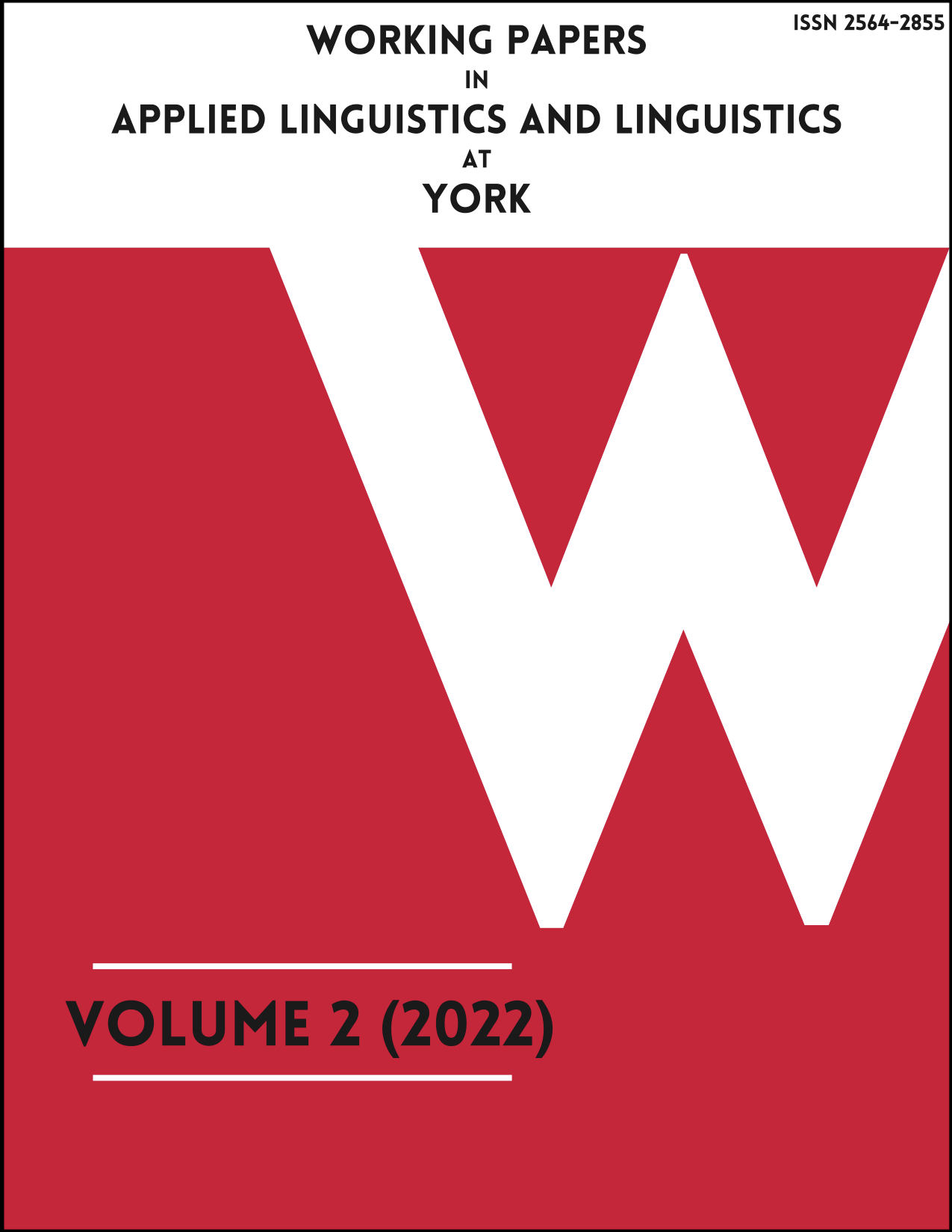Framing the pandemic in the political discourse of Justin Trudeau and Donald Trump
A reconnaissance
DOI:
https://doi.org/10.25071/2564-2855.14Keywords:
discourse analysis, COVID -19, framing, Canadian politicsAbstract
Employing the tools of discourse analysis, this paper seeks to investigate the framing strategies mobilized by Justin Trudeau and Donald Trump in their speeches delivered in response to the announcement of the global pandemic of COVID-19 on March 11, 2020. The author contrasts the frames of war and the frames of rational positivistic reaction to the challenge, exploring lexical choices, topoi, and larger discursive structures such as myths and ideologies to restore the storylines underpinning both texts. The analysis reveals the deeply instilled divergence of the vision of a nation, history, and the role of public institutions in both speeches.
References
Aarts, B. (2014). Hyponym. In The Oxford dictionary of English grammar. Oxford University Press. https://www.oxfordreference.com/view/10.1093/acref/9780199658237.001.0001/acref-9780199658237-e-663
Bakhtin, M. (1986). Speech genres and other late essays (C. Emerson & M. Holquist, Eds.; V.M McGee, Trans.). University of Texas Press.
Bar-Tal, D., Raviv, A., Raviv, A., & Dgani-Hirsh, A. (2009). The influence of the ethos of conflict on Israeli Jews’ interpretation of Jewish-Palestinian encounters. The Journal of Conflict Resolution, 53(1), 94–118. https://doi.org/10.1177/0022002708325942 DOI: https://doi.org/10.1177/0022002708325942
Bar-Tal, D., & Teichman, Y. (2005). Stereotypes and prejudice in conflict: Representations of Arabs in Israeli Jewish society. Cambridge University Press. DOI: https://doi.org/10.1017/CBO9780511499814
Benziman, Y. (2020). “Winning” the “battle” and “beating” the COVID-19 “enemy”: Leaders’ use of war frames to define the pandemic. Peace and Conflict, 26(3), pp. 247–256. https://doi.org/10.1037/pac0000494 DOI: https://doi.org/10.1037/pac0000494
Boukala, S. (2016). Rethinking topos in the discourse historical approach: Endoxon seeking and argumentation in Greek media discourses on “Islamist terrorism”. Discourse Studies, 18(3), pp. 249–268. https://doi.org/10.1177/1461445616634550 DOI: https://doi.org/10.1177/1461445616634550
Burke, P. J. (1991). Identity Processes and Social Stress. American Sociological Review 56, 836–49. https://doi.org/10.2307/2096259 DOI: https://doi.org/10.2307/2096259
Chilton, P. (2004). Analysing political discourse: theory and practice. Routledge. DOI: https://doi.org/10.4324/9780203561218
Chong, D. & Druckman, J. N. (2007). Framing Theory. Annual Review of Political Science, 10(1), 103–126. https://doi.org/10.1146/annurev.polisci.10.072805.103054 DOI: https://doi.org/10.1146/annurev.polisci.10.072805.103054
Crespo-Fernández, E. (2018). Euphemism as a discursive strategy in US local and state politics. Journal of Language and Politics, 17(6), 789–811. https://doi.org/10.1075/jlp.17040.cre DOI: https://doi.org/10.1075/jlp.17040.cre
Dupriez, B. (1991). A dictionary of literary devices: Gradus, A-Z (A. Halsall, Trans.). University of Toronto Press. https://doi.org/10.3138/9781442670303 DOI: https://doi.org/10.3138/9781442670303
Entman, R. M. (1993). Framing: Toward clarification of a fractured paradigm. Journal of Communication, 43(4), pp. 51–58. https://doi.org/10.1111/j.1460-2466.1993.tb01304.x DOI: https://doi.org/10.1111/j.1460-2466.1993.tb01304.x
Feinstein, Y. (2020). Applying sociological theories of emotions to the study of mass politics: The rally-round-the-flag phenomenon in the United States as a test case. The Sociological Quarterly 61(3), 422-447. http://dx.doi.org/10.1080/00380253.2019.1711255 DOI: https://doi.org/10.1080/00380253.2019.1711255
Frum, D. (2019, December 14). Trump’s trade war was futile. The Atlantic. https://www.theatlantic.com/ideas/archive/2019/12/trump-got-tough-on-china-it-didnt-work/603637/
Gamson, W., & Modigliani, A. (1989). Media discourse and public opinion on nuclear power: A constructionist approach. The American Journal of Sociology, 95(1), pp. 1–37. https://doi.org/10.1086/229213 DOI: https://doi.org/10.1086/229213
Ghebreyesus, T. A. (2020, March 11). WHO Director-General's opening remarks at the media briefing on COVID-19 - 11 March 2020. World Health Organization. https://www.who.int/director-general/speeches/detail/who-director-general-s-opening-remarks-at-the-media-briefing-on-covid-19---11-march-2020
Goffman, E. (1974). Frame analysis: An essay on the organization of experience. Harvard University Press.
Grice, H. P. (1989). Studies in the way of words. Harvard University Press.
Gumperz, J. (1992). Contextualization revisited. In P. Auer, and A. DiLuzio (Eds.), The DOI: https://doi.org/10.1075/pbns.22.04gum
contextualization of language (pp. 39-53). John Benjamins.
Iyengar, S., & Westwood, S. J. (2015). Fear and loathing across party lines: New evidence on group polarization. American Journal of Political Science, 59(3), 690–707. https://doi.org/10.1111/ajps.12152 DOI: https://doi.org/10.1111/ajps.12152
Jong, W. (2017). Meaning making by public leaders in times of crisis: An assessment. Public Relations Review, 43(5), 1025–1035. https://doi.org/10.1016/j.pubrev.2017.09.003 DOI: https://doi.org/10.1016/j.pubrev.2017.09.003
Jucker, A. H. (2017). Speech acts and speech act sequences: Greetings and farewells in the history of American English. Studia Neophilologica, 89(sup1), 39–58. https://doi.org/10.1080/00393274.2017.1358662 DOI: https://doi.org/10.1080/00393274.2017.1358662
Klein, E. (2020). Why we're polarized. Simon and Schuster.
Kornprobst, M. (2019). Framing, resonance and war: Foregrounds and backgrounds of cultural congruence. European Journal of International Relations, 25(1), 61–85. https://doi.org/10.1177/1354066117741675 DOI: https://doi.org/10.1177/1354066117741675
Lanham, R.A. (1991). A handlist of rhetorical terms (2nd ed.). University of California Press. DOI: https://doi.org/10.1525/9780520912045
McKay, D. (2021). American politics and society. John Wiley & Sons.
Montiel, C. J., Uyheng, J., & Dela Paz, E. (2021). The language of pandemic leaderships: Mapping political rhetoric during the COVID‐19 outbreak. Political Psychology, 42(5), 747–766. https://doi.org/10.1111/pops.12753 DOI: https://doi.org/10.1111/pops.12753
Reisigl, M., & Wodak, R. (2001). Discourse and discrimination: rhetoric of racism and antisemitism. Routledge.
Schwartz, J. (2020). Saying “thank you” and meaning it. Australasian Journal of Philosophy, 98(4), pp. 718–731. https://doi.org/10.1080/00048402.2019.1698627 DOI: https://doi.org/10.1080/00048402.2019.1698627
Searle, J. (1979). Expression and meaning: Studies in the theory of speech acts. Cambridge University Press DOI: https://doi.org/10.1017/CBO9780511609213
Silverstein, M. (2003). Talking politics. The substance of style from Abe to “W”. Prickly Paradigm Press.
Tannen, D. (1993). Framing in discourse. Oxford University Press.
Van Dijk, T. A. (1998). Ideology: A multidisciplinary approach. Sage.
Whitehead, A.L., & Perry, S. L. (2020). Taking America back for God: Christian nationalism in the United States. Oxford University Press. DOI: https://doi.org/10.1093/oso/9780190057886.001.0001
Downloads
Published
How to Cite
Issue
Section
License
Copyright (c) 2022 Katarzyna (Kasia) Kasztenna

This work is licensed under a Creative Commons Attribution-NonCommercial 4.0 International License.
You are free to:
- Share — copy and redistribute the material in any medium or format
- Adapt — remix, transform, and build upon the material
Under the following terms:
-
Attribution — You must give appropriate credit, provide a link to the license, and indicate if changes were made. You may do so in any reasonable manner, but not in any way that suggests the licensor endorses you or your use.
-
NonCommercial — You may not use the material for commercial purposes.
- No additional restrictions — You may not apply legal terms or technological measures that legally restrict others from doing anything the license permits.



